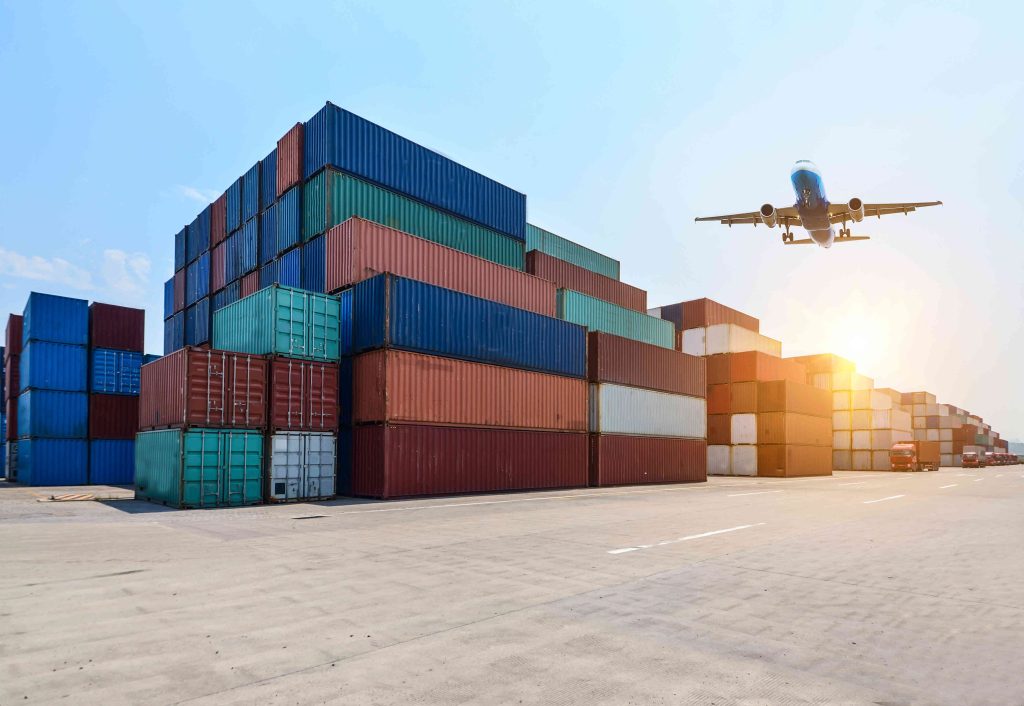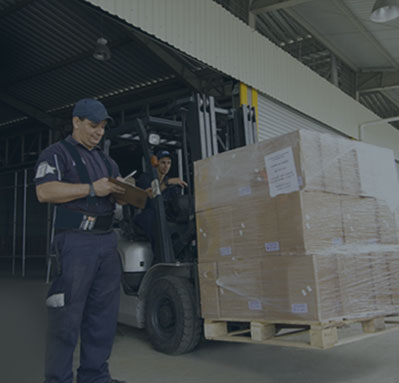As the world shrinks and markets expand beyond geographical boundaries, the need for international shipping continues to grow. Yet, for many businesses and individuals, the towering costs of sending goods across international borders can be daunting. However, international shipping doesn’t have to be a drain on your finances. By making strategic decisions and leveraging the right tactics, it is possible to achieve significant savings on your international shipping costs. This article elucidates several effective strategies to help optimize your shipping processes and reduce costs.
Understand the Fundamentals of Shipping
Before you plunge into the world of international shipping, it’s important to get a firm grasp on its fundamental principles. The cost of shipping is predominantly determined by factors such as package weight and dimensions, destination of the package, and chosen shipping method. For instance, shipping companies generally charge less for packages that are lighter and smaller. Moreover, it is often less expensive to ship to major cities compared to remote locations, largely due to ease of access. Familiarizing yourself with these elements can enhance your ability to strategically plan your shipments in a way that is cost-effective.
Conduct a Thorough Comparison of Shipping Providers
When it comes to international shipping, there’s no one-size-fits-all solution. Shipping providers differ widely in their services, pricing structures, specialties, and customer service quality. Therefore, conducting a detailed and methodical comparison of shipping providers is a critical step towards optimizing your shipping costs.
Comprehensive Market Research
The first step is to perform extensive market research. Familiarize yourself with the major players in the shipping industry, as well as smaller, perhaps less well-known companies that may offer competitive rates. Keep a lookout for any special discounts or promotional offers, as these can provide considerable savings.
Understand Pricing Structures
Next, dive deep into understanding their pricing structures. Most shipping companies price their services based on weight, volume, and distance. However, they may use different formulas to calculate these costs. Understanding these nuances can give you a better idea of which provider might be the most economical for your specific needs.
Factor in Specialized Services
If your shipment requires special handling, such as temperature control or extra security, take this into account when comparing providers. These specialized services can affect the cost, and not all providers may offer them. A shipping provider that can handle all your needs under one roof can help streamline the process and potentially lower costs.
Hidden Fees and Surcharges
While the base rate is a good starting point, don’t stop there. Be sure to look for any hidden fees or surcharges that could significantly impact your total shipping cost. These could include fuel surcharges, customs clearance fees, remote area surcharges, or fees for additional services such as package tracking or insurance.
Customer Reviews and Reputation
Lastly, consider the provider’s reputation and customer service quality. Check customer reviews and ratings online. A shipping provider that offers excellent customer service, clear communication, and efficient problem resolution can save you a lot of stress and potential extra costs in the long run.
Comparing shipping providers can be time-consuming, but the potential savings and peace of mind are well worth the effort. Armed with this knowledge, you’ll be in a stronger position to negotiate rates and choose the provider that best fits your budget and shipping needs.

Select the Optimal Shipping Method
Choosing the most appropriate shipping method for your needs can result in substantial savings. The method of shipping you choose can make a significant difference to your overall shipping costs. It’s essential to understand the pros and cons of each method to make the most cost-effective choice. The two primary methods of international shipping are air freight and sea freight, each with its own benefits and drawbacks.
Air Freight
Air freight is the quickest method for shipping goods internationally. It’s an excellent option for time-sensitive shipments or high-value items that need to be delivered as quickly as possible. However, air freight is also the most expensive shipping method. The costs can escalate quickly, especially for heavy or bulky items, as air freight rates are calculated based on both the actual weight and the volumetric weight of the shipment.
If you’re using air freight for urgent deliveries, it’s crucial to plan and schedule your shipment as early as possible. Airlines often offer lower rates for shipments booked well in advance. Additionally, consolidating your air freight shipments or working with a freight forwarder who can consolidate shipments from multiple shippers can help reduce costs.
Sea Freight
Sea freight is a more economical option for international shipping, particularly for heavy or bulky shipments. It’s also more environmentally friendly than air freight, making it a good choice if you’re aiming to reduce your carbon footprint. However, sea freight is also slower than air freight. It can take weeks or even months for a shipment to reach its destination.
When using sea freight, it’s essential to factor in the longer transit times into your planning. Additionally, while the shipping cost may be lower, sea freight can come with additional costs like port fees and customs duties, so it’s important to factor these into your total cost calculations.
Benefit from Shipment Consolidation
The art of shipment consolidation, or the combining of multiple shipments into a single, larger one, can be a highly strategic tool in minimizing international shipping costs. However, the execution of consolidation requires careful planning, coordination, and a keen understanding of its nuances. Here’s how you can effectively apply this technique to your shipping process.
Understanding Shipment Consolidation
Shipping providers often charge less per unit weight or volume for larger shipments compared to smaller ones due to economies of scale. This is where shipment consolidation comes into play. Rather than sending multiple smaller packages individually, which each incur separate handling, documentation, and shipping fees, you consolidate your shipments into a larger one. This helps lower your overall shipping costs, as you’ll be charged on the aggregate weight or volume, rather than on an individual package basis.
Coordinating with Suppliers and Customers
Effective consolidation requires coordinating with your suppliers and customers to align the timing of your shipments. If you’re dealing with multiple suppliers, consider synchronizing your production and shipping schedules so you can combine the shipments from different suppliers into one. If you’re shipping to multiple customers in the same region, you could consolidate these orders into a single shipment and then distribute them locally.
If coordinating shipments seems daunting, consider engaging the services of a freight forwarder or a third-party logistics provider (3PL). These companies specialize in consolidating shipments from multiple shippers, which can help you take advantage of consolidation without having to manage the process yourself.
Harness the Power of Online Shipping Tools
The advent of the digital age has significantly influenced the shipping industry, introducing a myriad of online tools that make the shipping process easier and more cost-effective. Shipping providers now offer sophisticated online platforms that cater to various aspects of the shipping process, allowing you to manage everything from rate comparisons to label generation at your fingertips.
One of the most significant benefits of these tools is the ability to compare rates from different carriers quickly. With a few clicks, you can input your shipment details and obtain a list of rates from various providers, helping you choose the most cost-effective option. This eliminates the need for manual research, saving you considerable time and effort. Additionally, these tools often provide transparency about potential surcharges and additional fees, enabling you to make a more informed decision about your shipping provider.

Take Advantage of Volume Discounts
Volume discounts are a key strategy to reduce shipping costs. Shipping providers often offer reduced rates for customers who ship high volumes, encouraging business growth and fostering customer loyalty. To capitalize on this opportunity, it’s crucial to understand your shipping patterns – frequency, volume, and peak periods.
Armed with this data, approach your shipping provider and negotiate a discount based on your shipping volume. If your current provider is unwilling, consider shopping around – the shipping industry is competitive, and other providers might offer better rates.
But remember, managing these discounts requires regular monitoring of your shipping volumes and adjusting your shipping strategy as necessary. In essence, while volume discounts require careful management, they offer an effective way to significantly lower international shipping costs, especially for businesses shipping goods frequently or in large quantities.
Keep an Eye on Extra Fees and Charges
International shipping often comes with additional fees and charges, such as customs duties, import taxes, and brokerage fees. Being aware of these costs allows you to budget more accurately and avoid unexpected costs. Moreover, some providers may charge extra for services like package pick-up, delivery confirmation, and insurance. These expenses should also be factored into your total shipping cost calculation.
Choose Your Foreign Suppliers Wisely
The choice of foreign suppliers can significantly impact your international shipping costs. It’s important to consider their geographical location since suppliers situated closer to your target market can help reduce shipping costs. Look for suppliers experienced in exporting goods and knowledgeable about international trade regulations, as they can help ensure smooth shipping processes and avoid unnecessary customs delays or penalties.
Partner with a Proactive Freight Forwarder
Choosing a freight forwarder who regards your relationship as a partnership can be highly advantageous. A proactive forwarder will provide personalized service, assist you in navigating the intricacies of international shipping, and actively seek ways to reduce your costs. They can use their network and industry knowledge to secure the best shipping rates and routes, leading to considerable savings.
Minimize Product Footprint
The physical size and weight of your product have a significant impact on shipping costs. Therefore, consider ways to minimize your product’s footprint where possible. This could mean optimizing product design for more compact shipping or creating a version of your product that can be disassembled for efficient transport. This strategy not only saves you money but also contributes to a more sustainable shipping approach.
Utilize a Fulfillment Warehouse
Adopting the use of a fulfillment warehouse positioned close to your key markets is an innovative strategy to substantially decrease international shipping costs. This approach entails shipping large quantities of your merchandise to a strategically located warehouse in a consolidated shipment. Once your goods are in the warehouse, individual orders are fulfilled and shipped locally to your customers.
By leveraging the economies of scale, the per-unit cost of shipping a large, consolidated shipment to the fulfillment warehouse is often significantly less than shipping individual orders directly to international customers. This strategy effectively minimizes shipping distance for individual orders and leads to substantial cost savings.
Beyond cost savings, utilizing a fulfillment warehouse can also increase customer satisfaction. Local fulfillment typically ensures faster, more reliable delivery, reducing the likelihood of delays that can occur with international shipping. It also simplifies the returns process, an essential aspect of customer service in today’s e-commerce landscape.

Optimize Your Packaging
Optimizing your packaging for international shipping is crucial to minimize costs and prevent damage. Using appropriately sized, lightweight, and compact materials reduces shipping expenses and maximizes space utilization. Investing in high-quality packaging that provides adequate protection helps safeguard against breakage and scratches during transit, saving you from replacement and reshipping costs. Though there may be an initial expense, optimized packaging results in long-term savings and improved customer satisfaction. Regularly reviewing and refining your packaging processes, following carrier guidelines, and collaborating with shipping partners enhance your operations. Striving for continuous improvement in packaging strategies ensures cost-effective and safe delivery of your products.
Minimizing Shipping Costs with Cargoline
The labyrinth of international shipping can be complex and daunting, but you don’t have to navigate it alone. Whether you’re an individual shipping personal items or a business with international shipping requirements, Cargoline UAE is here to offer customized solutions that meet your specific needs.
At Cargoline, we see ourselves as more than just a shipping provider – we’re your partner in shipping. Our dedicated team of experts is committed to guiding you through the process, offering personalized service, and identifying ways to help you save on shipping costs. With our competitive rates, cutting-edge online tools, and exceptional customer service, you can confidently ship your goods across international borders without the fear of excessive costs. Get in touch with us today and discover how partnering with Cargoline can revolutionize your international shipping experience.
Contact a team member to learn more. We look forward to working with you.







